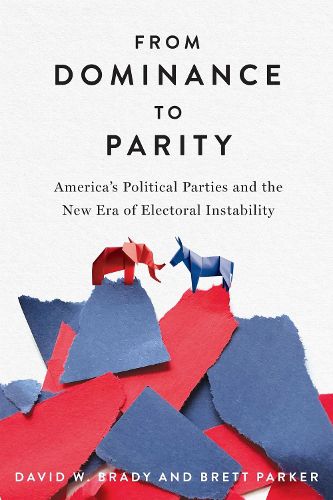Readings Newsletter
Become a Readings Member to make your shopping experience even easier.
Sign in or sign up for free!
You’re not far away from qualifying for FREE standard shipping within Australia
You’ve qualified for FREE standard shipping within Australia
The cart is loading…






At the time Jimmy Carter was inaugurated as the 39th president of the United States, the Democratic Party had been enjoying a half-century of sustained electoral advantage. It had long controlled Congress and dominated measures of party identification. When Carter defeated Gerald Ford in 1976, 40% of Americans called themselves Democrats and another 12% told survey takers they leaned towards the party. To win the election of 1976, Carter just needed to hold the voters that started out on his side. Nearly fifty years later, American politics has inverted itself. Close electoral competition is the norm, and politics are at a stalemate. Brady and Parker call the existing deadlock the era of party parity, an age of division unseen since the late-nineteenth century. This book explains this profound shift in electoral politics. Drawing on fresh datasets and long-running surveys, the authors trace the decline of the Democratic majority and consider how this decline differed from past realignments. They show why modern American presidential elections are always close and argue that the rise of Donald Trump largely reinforced preexisting trends. Their work represents a significant contribution to the scholarly literature on party identification and realignment.
$9.00 standard shipping within Australia
FREE standard shipping within Australia for orders over $100.00
Express & International shipping calculated at checkout
Stock availability can be subject to change without notice. We recommend calling the shop or contacting our online team to check availability of low stock items. Please see our Shopping Online page for more details.
At the time Jimmy Carter was inaugurated as the 39th president of the United States, the Democratic Party had been enjoying a half-century of sustained electoral advantage. It had long controlled Congress and dominated measures of party identification. When Carter defeated Gerald Ford in 1976, 40% of Americans called themselves Democrats and another 12% told survey takers they leaned towards the party. To win the election of 1976, Carter just needed to hold the voters that started out on his side. Nearly fifty years later, American politics has inverted itself. Close electoral competition is the norm, and politics are at a stalemate. Brady and Parker call the existing deadlock the era of party parity, an age of division unseen since the late-nineteenth century. This book explains this profound shift in electoral politics. Drawing on fresh datasets and long-running surveys, the authors trace the decline of the Democratic majority and consider how this decline differed from past realignments. They show why modern American presidential elections are always close and argue that the rise of Donald Trump largely reinforced preexisting trends. Their work represents a significant contribution to the scholarly literature on party identification and realignment.